Configuring SAML SSO for UserEcho
These steps will guide you through setting up the single sign-on functionality between ADSelfService Plus and UserEcho.
Prerequisite
-
Log in to ADSelfService Plus as an administrator.
- Navigate to Configuration → Self-Service → Password Sync/Single Sign On → Add Application, and select UserEcho from the applications displayed.
Note: You can also find UserEcho application that you need from the search bar located in the left pane or the alphabet wise navigation option in the right pane.
-
Click Download SSO Certificate link in the top-right corner of the screen.
-
In the pop-up that appears, copy the Login URL, Logout URL and download the SSO certificate by clicking on the Download Certificate button.
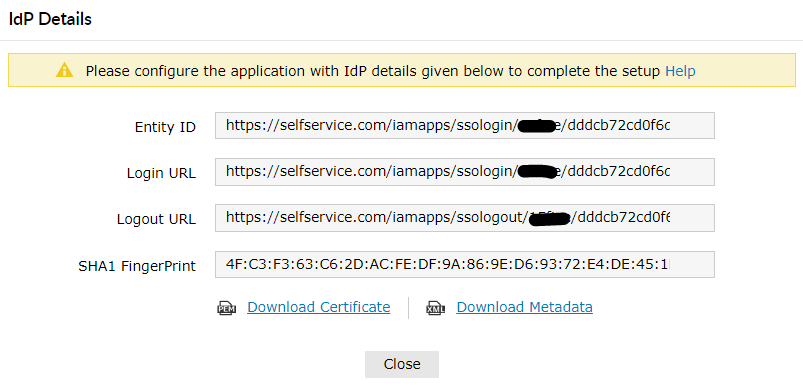
UserEcho (Service Provider) configuration steps
-
Login to UserEcho portal with an administrator’s credentials.
-
Click on Profile at the top-right corner and select Setup
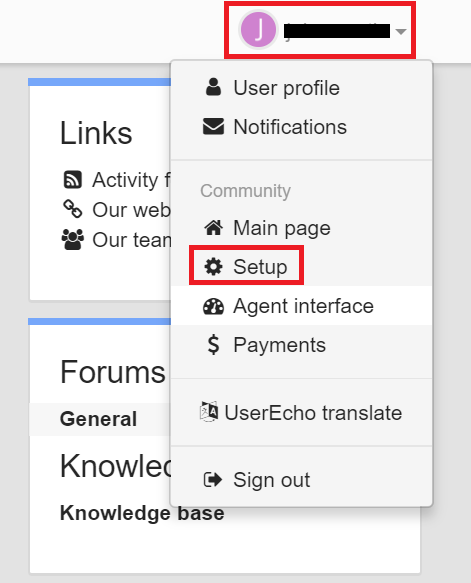
-
Select Integrations from the left pane and click on Single sign-on (SAML).
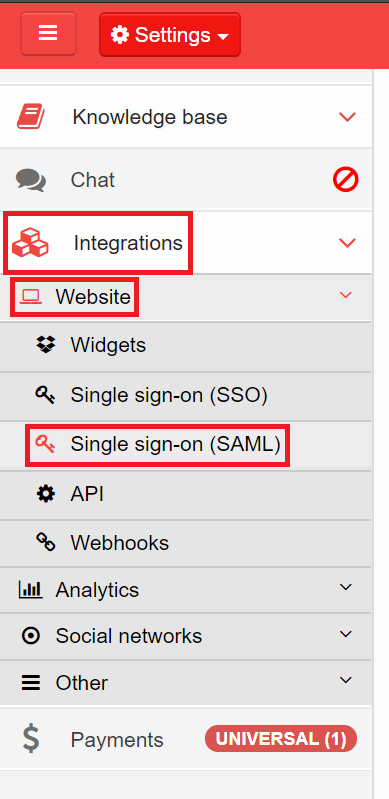
-
In the SAML SSO URL, enter the Login URL copied in Step 4 of Prerequisite,.
-
Open the SSO certificate downloaded (rsacert.pem ) in Step 4 of Prerequisite and paste its content in the X.509 Certificate field.
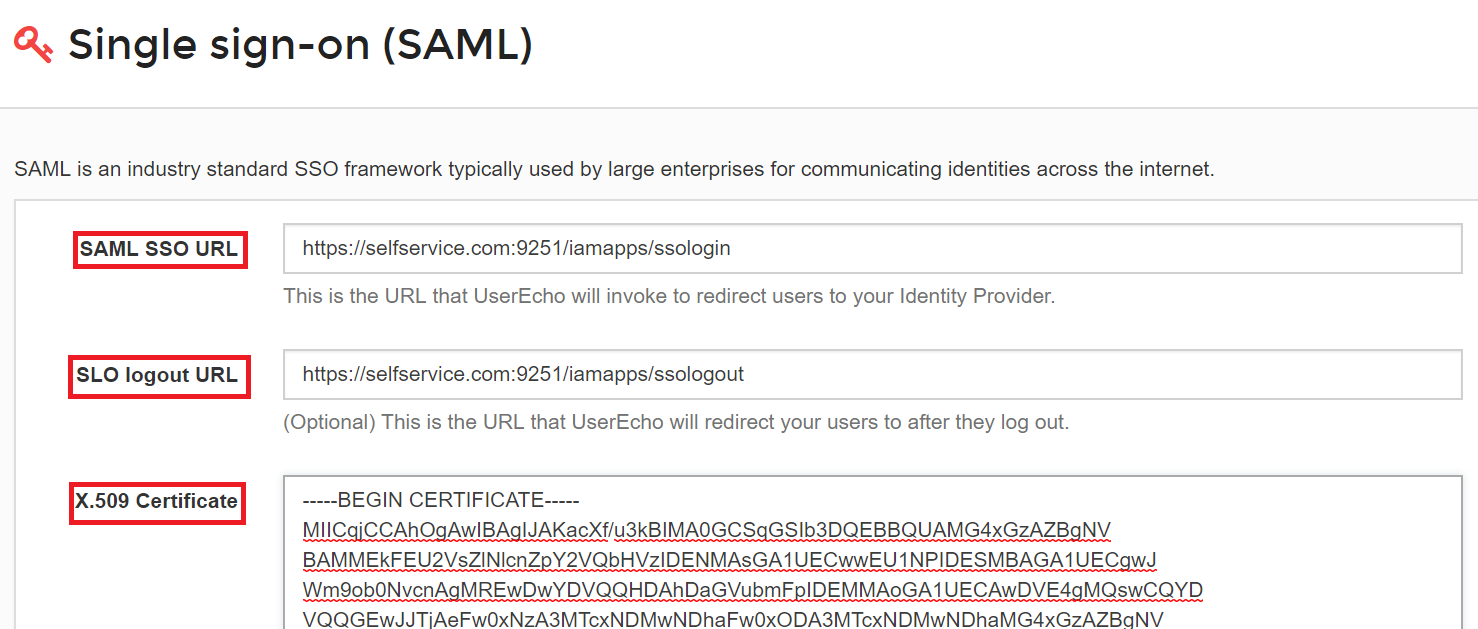
-
Click Save.
-
Navigate to Project → Login Settings from the left pane.
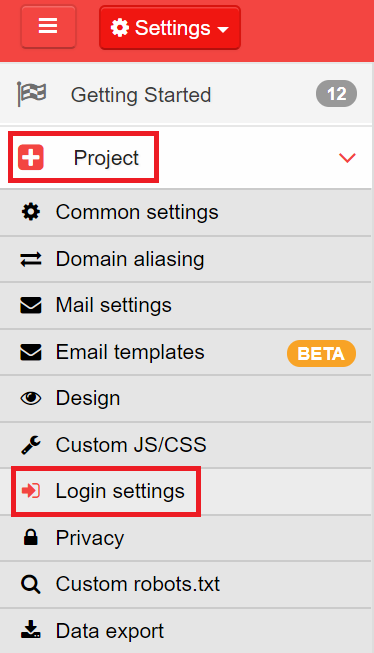
-
In the Login Type field, select SAML redirect from the drop-down box.
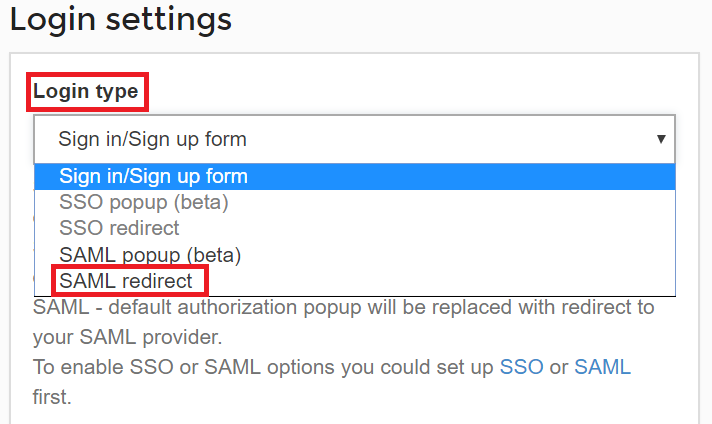
-
Click Save to complete the configuration.
ADSelfService Plus (Identity Provider) configuration steps
-
Now, switch to ADSelfService Plus’ UserEcho configuration page.
-
Enter the Application Name and Description.
-
In the Assign Policies field, select the policies for which SSO need to be enabled.
Note:ADSelfService Plus allows you to create OU and group-based policies for your AD domains. To create a policy, go to Configuration → Self-Service → Policy Configuration → Add New Policy.
-
Select Enable Single Sign-On.
-
Enter the Domain Name of your UserEcho account. For example, if you use johndoe@thinktodaytech.com to log in to UserEcho, then thinktodaytech.com is the domain name.
-
In the SP Identifier field, enter the domain name of your UserEcho account. Example: If your UserEcho domain URL is https://test.userecho.com, your SP Identifier is test.
- In the Name ID Format field, choose the format for the user login attribute value specific to the application.
Note: Use Unspecified as the default option if you are unsure about the format of the login attribute value used by the application
-
Click Add Application
Your users should now be able to sign in to UserEcho through ADSelfService Plus.
Note:
For UserEcho, both IDP and SP initiated flows are supported.
Don't see what you're looking for?
-
Visit our community
Post your questions in the forum.
-
Request additional resources
Send us your requirements.
-
Need implementation assistance?
Try onboarding





